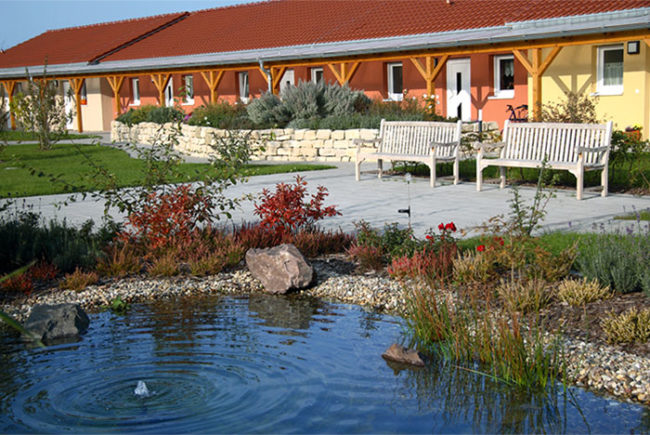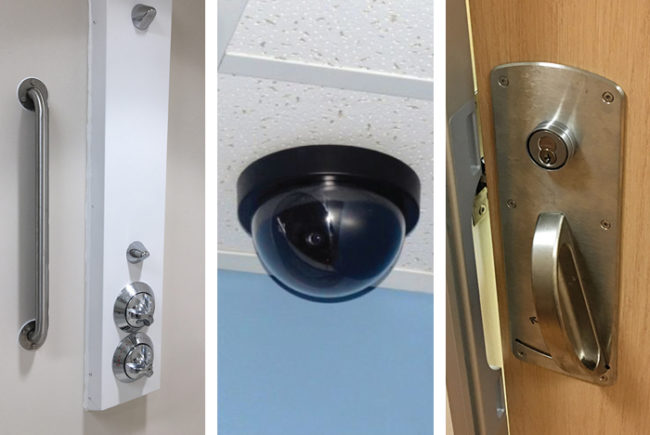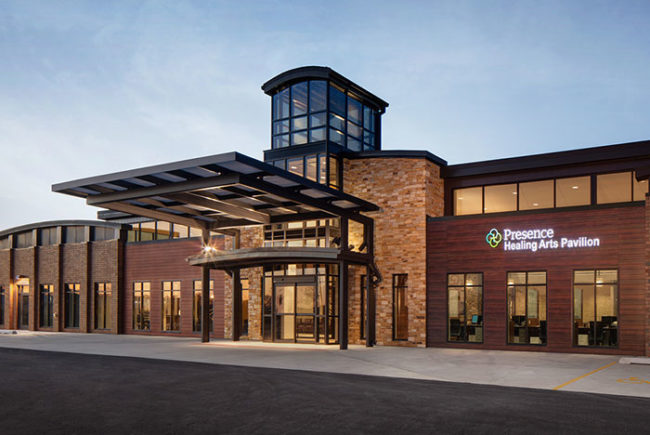Excessive noise in hospitals can adversely affect the physiological and psychological well-being of both patients and staff. Frequent sources of complaints include lack of privacy due to multiple patient beds in the same room, noise from clinical equipment (e.g., monitoring alarms, infusion pumps and respirators), and elevated noise from staff activities in larger, open work areas, says William Chu, LEED AP BD+C, senior and principal consultant, Acentech, Los Angeles, and Cambridge, Mass.
“Increased noise levels negatively impact the patient experience during a hospital stay. This might be due to the fact that excessive noise can increase patients’ heart and respiratory rates, heighten blood pressure and increase stress,” says Margi Kaminski, ASID, NCIDQ, principal and national co-director of health care interiors at CannonDesign in Chicago. “In addition, patients are often fatigued by the blast of medical alarms and do not get needed rest.”
Elevated background noise levels may impede audio communication and monitoring. “Unexpected or irrelevant noises may distract the attention of pharmacists and surgeons from medication dispensing or surgical tasks, causing medical errors and near misses,” adds Ellen Taylor, Ph.D., AIA, EDAC, vice president for research, The Center for Health Design, Concord, Calif.
Layout’s impact
Although a hospital is a healing environment, it is also a functioning one. For the patient’s safety, clinicians need to communicate, alarms need to sound, and equipment and staff must move throughout corridors. “Designers can’t eliminate activity or noise, and materials can only do so much to absorb it,” says Dawn Thornton, registered architect and senior associate, CBRE | Heery, Philadelphia. “But what they can do is design a physical environment that disperses noise, limits its duration and contains it.”
Thornton recommends providing easily accessible enclosed spaces near nurses’ stations to encourage “offstaging” communication among staff. Also, decentralized nursing stations allow nurses to respond more quickly to an alarm or nurse call. Decentralized patient support areas also minimize equipment movement in corridors.
Keeping doors closed promotes noise control as well as patient privacy. Alternatively, niches between patient rooms with vision panels enable discrete viewing. “Niches can have a counter and computer to decentralize the nursing staff; and glazing treatment can provide patient privacy, such as integral blinds or electric glass,” Thornton says.
Also, consider separating and buffering service areas with noise-generating sources (e.g., pneumatic tube stations, and hand-washing and prep areas) from open patient rooms, Chu says.
For exam and therapy areas, Kaminski advises constructing walls all the way up to the deck above, not just to the ceiling. By doing this, the space in which the ductwork runs through won’t be able to carry sound from one room to the next.
Sound blocking — using solid walls and doors between patient beds instead of soft curtains — is another strategy to reduce noise, Taylor says. They reduce sound transmission significantly between patient care areas and provide better privacy.
In a current project, Thornton designed a new 28-bed intensive care unit (ICU) for an expanding health center with universal rooms to reduce patient, staff and equipment movement. Pods containing eight rooms and four decentralized nurses’ stations were created within the unit. Each pod contains open and closed staff work areas and required patient support such as medication and nourishment as well as equipment rooms and clean and soiled holding areas. Coffee and a microwave are also available for families.
Choosing materials
A growing list of sound-absorptive products are designed with health care facilities in mind, such as washable mineral fiber acoustical ceiling tiles that maintain a noise-reduction coefficient of 0.70; alternative sound-absorptive materials, such as crushed glass or stone wool that minimize use of volatile organic compounds; and rubber flooring products that minimize impact noise, Chu says.
Manufacturers also are offering sound-absorptive products that provide nature-inspired design flexibility — through perforated natural wood veneers or the use of sound-absorbing geometric patterns and curved baffles, Chu adds. Such materials tie into the biophilic design trend toward interiors that encourage complexity of visual stimuli.
“Despite advances in sound-absorbing products, some institutions may still forgo sound-absorbing materials that have more texture and choose hard surfaces — especially in high-traffic areas such as an ICU or emergency department — because they are easier to clean, which is important for better infection prevention,” Kaminski says. New resilient flooring choices with sound-absorbing cushioning may be a good choice for these areas.
And for those institutions that prefer carpeted corridors, Kaminski recommends carpeted tiles because, in addition to the carpet’s face being sound absorbing, the backing is as well.
In addition to absorbing sound, materials can promote peaceful, calming surroundings which, in turn, encourages staff to do so as well. “When walking into a spa, its calming environment makes you feel compelled to speak in the same manner,” Thornton says. “A restful color palette found in nature along with soft patterns in flooring and wall treatments will promote such an environment.”
The loud clicking of door-latching hardware also can be annoying. Choose hardware that ensures a quiet closing and soft latching, Thornton advises.
A maintenance role
Another way to lower noise levels is to eliminate noise at the source. Instead of overhead paging, equip staff members with their own phones. Bowman also recommends employing sound-masking white noise.
Keeping up with equipment maintenance or replacement, such as squeaky wheels on carts, can improve conditions as well, Taylor adds. Similarly, schedule maintenance and housekeeping activities outside of normal sleep hours.
Barbara Dellinger, FIIDA, EDAC, CHID, MDCID, NCIDQ, director of design and research, Adventist HealthCare, Rockville, Md., recommends moving the ice machine into a room with a door. In addition to the sounds of ice dropping, people tend to gather and talk at the ice machine.
A quiet environment
Using dimmable lighting in the evenings also can be beneficial. Just like being in a restaurant, if lighting is dim, people speak more quietly, says Abby Weilmuenster, IIDA, ASID, NCIDQ, EDAC, LEED, AP BD+C, senior interior design manager, ESa, Nashville, Tenn.
In an effort to reduce noise, one hospital created an afternoon quiet time from 1 to 3 p.m., Kaminski says. It posted signs at each unit’s entrance alerting guests and staff to keep conversations low and to a minimum. It also lowered light levels in corridors to create a quieter atmosphere.
Weilmuenster also suggests setting patient televisions and phones to only reach a certain volume. Patients with hearing challenges can use assisted listening devices to hear the television without disturbing others. Another suggestion is to calibrate equipment to avoid false alarms.
One institution used artwork, such as a photograph of a child with his finger in the “shhh” position, as a way to convey the importance of being quiet to both staff and visitors.
Ken Bowman, IIDA, ASID, NCIDQ, EDAC, LEED AP ID+C, director of interior design, ESa, recommends installing a visual sign, such as a light flashing at a nurses’ station, to indicate that noise levels have become too loud in that area.
The bottom line is that many aspects can be addressed when looking to reduce noise levels in hospitals, from layout, materials used and promoting a quiet environment to simply eliminating noise.






